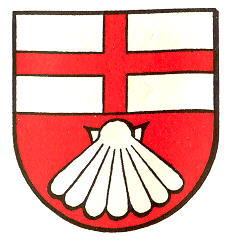Frohnstetten: Difference between revisions
Knorrepoes (talk | contribs) m (Text replacement - "/Arms of " to "/Arms (crest) of ") |
Knorrepoes (talk | contribs) m (Text replacement - "{{media}}" to " {{de1}} {{media1}}") |
||
| Line 27: | Line 27: | ||
Th State Archives then proposed the above arms, with another symbol of St. Silvester, the scallop. In the upper half a cross was added. The cross refers to the Buchau convent, to which the village belonged from at least the 14th century until 1803. | Th State Archives then proposed the above arms, with another symbol of St. Silvester, the scallop. In the upper half a cross was added. The cross refers to the Buchau convent, to which the village belonged from at least the 14th century until 1803. | ||
{{ | |||
{{de1}} | |||
{{media1}} | |||
[[Civic Heraldry Literature - Germany|'''Literature''']]: Gönner , 1958; | [[Civic Heraldry Literature - Germany|'''Literature''']]: Gönner , 1958; | ||
Revision as of 11:44, 26 December 2022
This page is part of the German heraldry portal |
Heraldry of the World |
|
German heraldry:
|
Selected collector's items from Germany:
|
FROHNSTETTEN
State : Baden-Württemberg
District (Kreis) : Sigmaringen
Incorporated into : 1975 Stetten am kalten Markt
| German |
In geteiltem Schild oben in Silber ein durchgehendes rotes Kreuz, unten in Rot eine silberne Muschel. |
| English | No blazon/translation known. Please click here to send your (heraldic !) blazon or translation |
Origin/meaning
The arms were officially granted on February 14, 1958.
Frohnstetten never had its own arms and the local seal only showed the name of the village. In 1949 the State Archives of Württemberg proposed a bull's head as arms for the village. The head was the symbol for St. Silvester, the local patron saint. The local council, however, rejected the symbol.
Th State Archives then proposed the above arms, with another symbol of St. Silvester, the scallop. In the upper half a cross was added. The cross refers to the Buchau convent, to which the village belonged from at least the 14th century until 1803.
Literature: Gönner , 1958;


